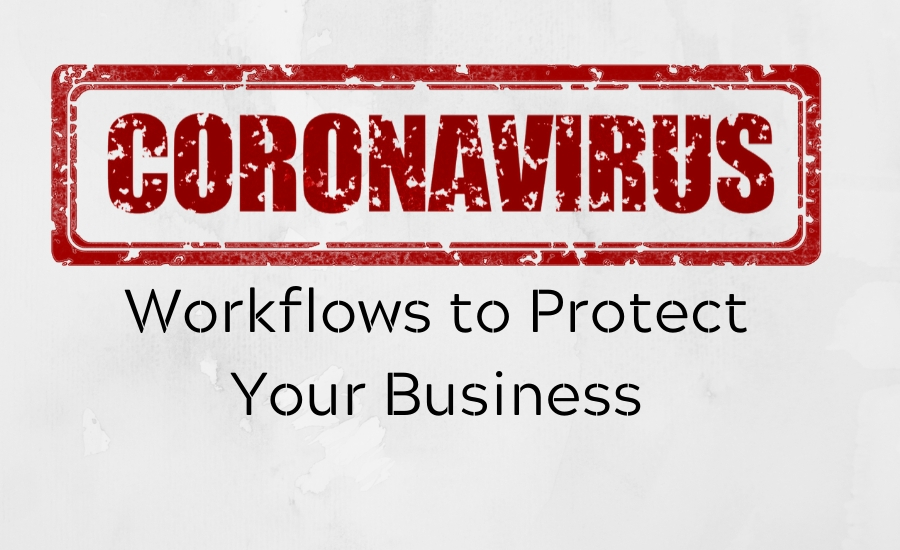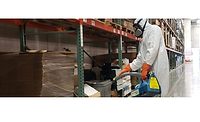Coronavirus (COVID-19): Workflows Protect Your Business

Restoration companies are used to responding quickly to a loss without having all the facts but this needs to change in order for them to protect their business and their employees. A more proactive approach is good for the industry.
The risk to your business and employees increases every day with the spread of COVID-19. More than likely, this will change how we all work from this point forward. In this article, we will talk about response protocols that allow your company to be proactive, understand your clients’ needs and reduce exposure to your staff.
Be proactive
From the moment you receive a call from a customer, you and your team need to proactively complete a risk assessment. Restorers who can access photographs and gather the relevant information before sending their teams to the site will be able to better protect their workers. Today’s technology allows for the remote capture of signatures, photos, videos and other critical information required to make decisions before deploying resources.
You need to be asking health questions of your client, to determine if and what PPE your team will need to wear in the restoration response.
Restorers who can readily collect this information remotely will have a distinct advantage over those responding haphazardly. Your goal is to reduce unnecessary risks to your workers and optimize your resources. The bloodline of your business are employees who know how to mitigate and restore buildings when they are damaged. Your business ceases to exist if they are in quarantine. Therefore, you want to have a clear understanding of the risks for each job, size the loss, respond in a proactive manner, and complete the work as efficiently and safely as possible for all parties.
Be prepared for the demand
Insurance companies and property managers will more than likely focus on keeping their teams away from contamination risks if they lack the training and equipment to protect themselves. Many of them will need to rely on the eyes and ears of restorers who are trained to deal with the risks in the field. These companies are going to require more information from your team in order to deal with these claims remotely.
Many property management companies will struggle to get a response plan in place and manage the impact on their buildings. Once again, restoration contractors will be their expert resource to rely on for detailed reporting and restoration services.
Manage the expectations
It is necessary for restoration contractors to ensure they have the proper legal documents in place that have been reviewed and approved by a competent legal resource. Unlike our normal restoration business, COVID-19 is going to require the appropriate language that addresses issues such as warranty and the high risk of recontamination. There may be pressure to cut corners regarding testing, procedures and clearance tests but this is highly inadvisable. In the case of COVID-19, the effects of a poorly crafted response can result in damages that exceed your business liability insurance policy limits.
Digital application
I can’t overstate how important a digital workflow tool is to your business now and going forward. The more you can accomplish in terms of understanding the risk of the job, the scope of loss, and protecting your company legally before deploying resources, the less vulnerable your business will be.
Restoration services cannot be replaced by digital processes, but it can be greatly enhanced by it. Your focus should be on establishing proactive digital workflows that allow you to remotely engage, quickly resolve the job and disengage as soon as possible with the least amount of face to face customer interactions.
Does your workflow align with this minimal contact workflow?
- Contracts and authorizations – signed digitally
- Health and safety questionnaire that explicitly talks about COVID-19 - Signed digitally before your teams respond
- Your response will depend on the customer response
- Enter the building and execute the job
- Normal protocols
- COVID-19 protocols
- Monitor equipment and take readings with minimal interaction and send digital reports to the customer.
- Remove equipment and decontaminate the equipment before loading onto the truck
- Digitally have the completion certificate signed and all other closing documents
- Digitally send the information to the carrier/property management company to get payment
Conclusion:
Regardless of the size of your company, protecting your employees and your customers is going to be critical to your financial success in the coming months. Focus on reducing the number of non-essential face to face contacts and be safe responding to those in need.
On April 8th at 1 PM ET, we are bringing together industry experts Norris Gearhart CR, Michael Pinto, CMP, Ed Cross “The Restoration Lawyer”, and myself for a can’t miss virtual roundtable discussion on how this pandemic changes the way the restoration industry is doing business, and how you implement workflows to keep your staff and customers protected.
Book your spot for the roundtable today - Protecting your business during the COVID-19 pandemic.
This online session will be available to anyone who wants to join live or who wants a recorded version. This information could very well protect your business from devastating mistakes.
Looking for a reprint of this article?
From high-res PDFs to custom plaques, order your copy today!





